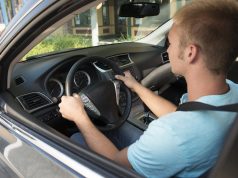First of all, it’s important to say that сritical thinking skills are essential for success in almost every aspect of life. From problem-solving in the workplace to making important decisions in personal lives. We can describe critical thinking as an ability to identify assumptions, analyze information, evaluate evidence, and draw logical conclusions. Critical thinking skills helps us to define and identify problems, analyze potential solutions, and make decisions. It also helps us to make better decisions. By carefully evaluating different options, we can make conscious choices. The last ones lead to positive outcomes.
When we analyze information, we are also practicing communication. Thus, such skills help us to communicate effectively. By thinking critically, we can consider different approaches, identify new ideas, and think outside the box. All this improve and enhance our creativity. All of the above arguments are important, starting as early as the student years. Therefore, colleges and universities should pay considerable attention to educating students in media and digital literacy.
Teaching Critical Thinking and Media Literacy
The spread of misinformation and fake news is unrestrained in today’s world. That’s why teaching students critical thinking and media literacy is crucial nowadays. Here are some ways teachers can educate their students to identify fake news and be media literate.
⦁ Sources Evaluation
Encourage students to be critical of the sources they use in their academic work. Teach them how to find reliable sources. How to be able to assess the reliability of those that may be biased. It should be easy for students to think in the style of “I can write this fake news essay“, thus showing their media literacy education. Such fake news essays can show and describe different fake news and its impact. The latter can be decisive in misunderstanding the situation and taking the wrong actions.
⦁ Questioning Assumptions
Teach students to question their assumptions and to consider various perspectives. Encourage them to think about the possible biases of sources. Explain to them the importance of considering the consequences of the information they consume.
⦁ Fact-Checking
Teach students to fact-check information before they share it. Educate them to verify information with multiple sources. Guide them to look for evidence that contradicts or supports a claim.
⦁ Critical Attitude to Media Messages
Tutor students to think critically about messages they see in the media. Learn them to identify the methods used by the media to influence their opinions. Explain to them how to assess the credibility of sources.
Strategies to Promote Media Literacy
⦁ Media Creators
Educate students to be media creators. Encourage them to do this. Challenge students to create their own media, such as podcasts, blog posts, or videos. This will teach them to be critical consumers of mass media.
⦁ Thinking Consumers
Train students to be critical consumers of media. Teach them that it is okay to question different news sources. It should become a common thing in today’s world to double-check them.
⦁ Conscious Analysts
Graduating students, especially those who write their diploma theses at the journalism courses, should be able to analyze everything. This should be the basis of their daily thinking. Analyzing media messages and the methods used to influence their opinions.
⦁ Open Discussion Culture
Foster a culture of public discussions. Encourage open discussions about media and current events in class. This will help students learn to appreciate different points of view and develop productive conversation skills.
⦁ Access to Diverse Media
Provide students with access to a range of media sources. Choose ones that represent multiple points of view and show diverse perspectives.
Importance of Digital Literacy
In today’s world technology plays a significant role in almost every aspect of our lives. That is why to understand the importance of the digital literacy is very reasonable. It promotes social inclusion. Digital literacy can help bridge the digital divide by giving individuals access to resources and information that they may not otherwise have. It also enhances employability. It is important in the workplace. Individuals with strong digital skills are more likely to be competitive in the job market. Digital literacy empowers individuals to use technology to access information, solve problems and communicate.
Digital literacy skills are significant for individuals who want to continue learning throughout their lives. Thus, it supports lifelong learning. Digital literacy also enables individuals to communicate with others, regardless of time zone and distance.
Teaching students critical thinking and media literacy is essential in combating fake news. In today’s digital age information is easily accessible and can spread quickly. That’s why it is crucial to educate students how to identify fake news and develop their critical thinking skills to evaluate the reliability and validity of information. Students can learn how to identify bias and manipulation in the media. They may evaluate the credibility of sources, and distinguish between fact and opinion. This will not only help them in their academic pursuits but also in their personal lives. They will be able to make informed decisions based on accurate information.










